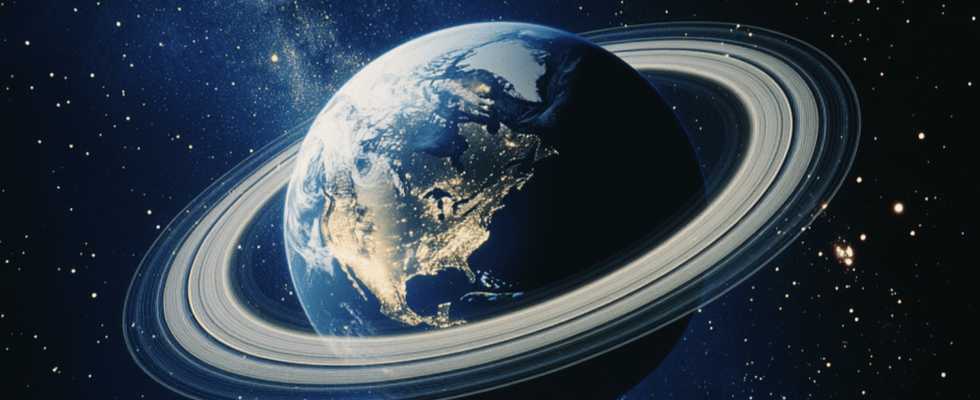The blue planet would have had its own ring, which would have influenced living conditions on Earth.
Saturn is a planet well known for its rings which are seven in number. It is not the only one to have them, Neptune has five and Jupiter has three. Uranus is the most abundant with no less than thirteen rings. These are composed of small particles and dust that orbit the planets. According to a recent study in the journal Earth & Planetary SciencesEarth would also have had its own ring in the past.
By looking at ancient craters, scientists have noted a particularly high rate of impact on Earth more than 400 million years ago. They also noticed that these craters did not have a random position on the Earth’s surface: they were all less than 30 degrees from the equator. They could be markers of an ancient cataclysmic event. The researchers also noted an increase in materials from asteroids in the sediments, materials that appeared to be identical and therefore came from the same source.
They then affirmed that approximately 466 million years ago and for 20 to 40 million years, a ring surrounded the blue planet, following the destruction of an asteroid, which, instead of entering direct impact with the planet, would have broken down into small pieces. This debris would then gradually fall to Earth, creating craters.

This presence of a terrestrial ring would have had consequences on living conditions on Earth. A major glaciation was noted during this period as well as the mass extinction of certain species. However, this ring could have shaded part of the Earth and reflected light, cooling the global climate. The subsequent global warming would coincide with the dissipation of the ring.
“The idea that a ring system may have influenced global temperatures adds a new layer of complexity to our understanding of how extraterrestrial events may have shaped Earth’s climate,” explained Professor Andy Tomkins, lead author of the study.
If further research is still necessary to confirm this theory, scientists want to improve their modeling of the formation of the rings as well as their study of their evolution over time, especially since other planets could be concerned. Mars is, in fact, currently tearing apart one of its moons, which could cause the appearance of a ring around the planet in the next 20 to 40 million years.
